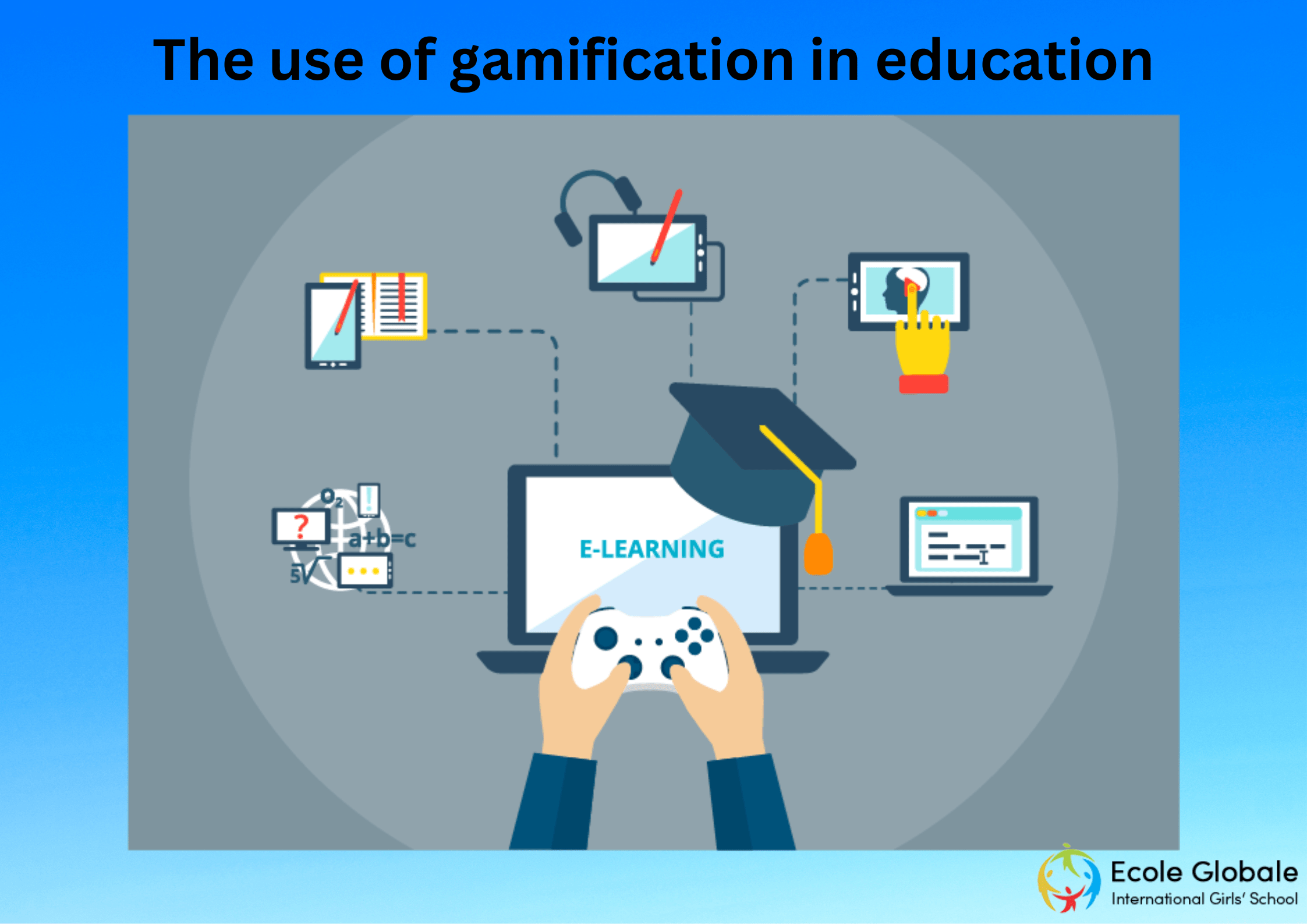Game elements can provide additional motivation for learners to accomplish otherwise routine tasks, and if used properly, educational game elements can be one example of how gamification can enhance 21st-century learning. This compilation is a review of current educational gamification with an emphasis on the research that explains the levels of motivation provided through gamification, as well as explicates the principles and theories that underlie the application of game elements in learning.
Benefits of gamification in education
A. Increased engagement and motivation
The success of a gamified learning experience is dependent on the level of engagement achieved by learners. In fact, research shows that when learners are highly engaged, they are more likely to retain information and make use of it outside the classroom. This can be attributed to their motivation levels, which are heightened when they feel like they are playing a game rather than learning something dry and boring.
How Gamification Tool Helps In Teaching Online Education?
Gamification is a technique that utilizes different exercises and awards to advance understudy commitment.
As per research conducted bu boarding schools in Dehradun ,Studies have shown that gamification increases student engagement by up to 20% and improves long-term retention by up to 50%. Students are more likely to focus on the task at hand when they are engaged in a fun activity that challenges them and ultimately makes them feel good about themselves when they succeed (or fail). Gamified learning environments also give students opportunities to explore their interests while encouraging collaboration and teamwork.
This type of active learning has been proven to increase student performance overall by providing an engaging way for students to engage their brains during class time so they can focus on learning instead of being bored or distracted.
The use of game elements facilitates this increased level of engagement in three ways:
1) Competition
2) Feedback/reinforcement
3) Rewards
B. Improved learning outcomes
Gamification is the application of game-based techniques to non-game problems. It can be used to encourage people to learn new skills, develop a sense of community, or achieve specific goals.
Gamification in education refers to the use of game elements such as points and badges that are earned for completing tasks or learning content.
It is a very powerful tool for improving engagement, motivation, and compliance with learning objectives.
The following are some benefits of gamification in education:
Improved learning outcomes: Gamification has been found to improve the effectiveness of learning by making it more enjoyable and engaging for students. A study conducted by researchers from Carnegie Mellon University showed that students who played educational games were able to retain more information than those who did not play these games.
Motivation: Gamification provides an opportunity for students to be engaged with their studies on a regular basis, which increases their motivation levels towards learning. Students gain a sense of achievement when they reach a certain level or complete a task successfully, which increases their confidence levels, thereby enhancing their performance levels as well.
C. Development of 21st-century skills
Gamification is the application of game-based mechanics, aesthetics, and game thinking to non-game contexts in order to engage users in solving problems or accomplishing tasks. The use of game design elements in non-game environments is not a new phenomenon. For example, Grand Theft Auto III was one of the first games to include real money transactions between players (e.g., players can buy and sell virtual property). However, there has been a recent increase in the use of gamification across industries as companies realize that its success lies in applying game design elements to non-game scenarios.
Gamification has been applied to a variety of domains, such as education, healthcare, marketing, and training. One area where gamification has been particularly successful is education. In this post, we will discuss how gamification can be beneficial for educators by improving student engagement and performance while also developing 21st-century skills such as creativity and problem-solving skills among students.
Examples of gamification in education
Digital gamification in the classroom
Gamification is the process of implementing game elements into non-game contexts to engage users in solving problems, making decisions, and taking action. Gamified systems are designed to support engagement, motivation, and learning by using game design elements. This approach has been applied to education to improve learner motivation and achievement.
Digital gamification in the classroom is the use of digital games (such as computer games) as a part of a learning environment. Digital games are interactive computer applications that can be played by people. In this context, digital games can be used to increase students’ engagement with their studies, motivate them to persist in challenging tasks, and provide feedback on their performance through points and levels gained by completing tasks successfully.
Game-based learning platforms
Gamification is the use of game-design elements in non-game contexts. It’s also referred to as “gameful design.” Gamification can be used as a learning tool, but it can also be used to encourage people to adopt healthy habits and behaviors. Here are some examples of gamification in education:
- Game-based learning platforms: These platforms allow teachers to create their own games that students can play using their computer, tablet, or smartphone. Some of these platforms include Classcraft, Kahoot!, Quizizz, and Quizlet.
- Educational games: Educational games can be used by teachers in a number of ways, such as an introduction activity or a review activity at the end of a unit or lesson. They are also used by students independently at home or in school to reinforce concepts learned during class time. Some examples of educational games include Foldit (protein folding), iCivics (American government), Treehouse (computer science), and PlayMaker (math).
Criticisms and challenges of gamification in education

A. Potential for oversimplification of learning
Gamification in education is a hot topic, but it’s also a controversial one. Proponents believe it can help improve student engagement and boost learning outcomes, while critics warn that it can lead to oversimplification of the curriculum and disengagement with learning.
The pros of gamification in education
Proponents argue that gamification can be used to make learning more fun for students and increase their motivation to learn. The key is finding games that are educational and relevant to the subject matter being studied. The idea is that if students find learning fun, they’ll be more likely to engage with their studies, which will result in better grades and higher achievement over time.
A 2012 study published in Computers & Education found that students who played an educational game were better able to solve problems related to the material covered in the game than non-players were. This suggests that adaptable educational games could help improve problem-solving skills in real life as well as provide specific knowledge about a subject matter.
Another advantage of digital games is their ability to personalize content based on each student’s level of understanding. For example, when a player reaches an impasse or finds themselves stuck during gameplay, they may receive hints from the game itself that guide them back on track toward success.
A gamification is a powerful tool for education, but it can also be misused. Here are some ways to ensure that your gamification strategy has the greatest impact.
- Gamification should be designed carefully to ensure effectiveness
Gamification has been used in all kinds of business settings and with many different types of software. Ideally, you want to approach gamification with as much planning and forethought as possible so that you can tailor your approach to meet your specific needs.
- Potential for unequal access to technology
Gamification can be a divisive phenomenon because not everyone has equal access to technology or even to the same devices (e.g., smartphones). While there are ways around this problem, such as using paper-and-pencil versions of games, it may be worth considering how much extra effort these options will take before deciding whether or not they’re worthwhile for your particular situation.
Conclusion
Through conducting this research, we came to realize why gamification in education is so important. What we learned through our research helped us understand that gamification in education is an exciting new area and provides tremendous opportunities for future research. The data provided proved that there are compelling reasons to incorporate games into learning environments, and the results show that a well-designed game can be very effective in education.
One thing this research has shown is that gamification will not necessarily be a silver bullet for educational difficulties, but rather one of the many tools available to teachers. But if used appropriately and effectively, teachers could use gamification to truly reach students around the world.
For any queries related to parenting, schooling, or any student-related tips, click here to check out our latest blogs










